Black Santa was an Erskineville man, Syd ‘Doc’ Cunningham, who used to distribute presents to rural children every Christmas. Syd would sit outside the Woolworths supermarket in King Street, Newtown, collecting money and toys throughout the year. Around Christmastime he would give a Christmas card to people who dropped money in his bucket.
After Syd died in 1999 a bronze plaque was installed at the spot where he used to set up his folding table. On it was a depiction in relief of his plastic bucket.
In 2000 the footpath was repaved, with synthetic bluestone pavers replacing the asphalt.
Before the works commenced the plaque was removed. But in the place where it had been glued to the footpath, somebody wrote an impromptu memorial to Black Santa in red chalk.
After the repaving was finished, the original plaque was reinstalled, and it’s still there today. The supermarket itself has changed hands a few times. Currently it’s an IGA. And Syd’s plaque has become the focal point for beggars who keep his memory alive by collecting for themselves.
Funny thing though. Just a few days ago, someone wrote a post about the plaque on the Republic of Newtown Facebook page, adding, ‘ Sadly, the plaque was removed when the footpath was resurfaced’. Somehow this person had failed to notice that the plaque was put back fourteen years ago. That Facebook page got many comments and even though several noted that the plaque was still there, quite a few comments demanded that the plaque be replaced. Sentimental indignation prompted by misinformation. It happens.
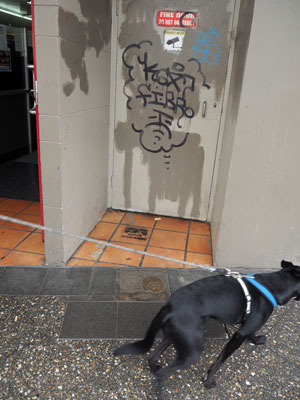
The plaque in the same place, next to the IGA supermarket, December 2014. All photos of this spot in King Street are from the Pavement Graffiti archives by meganix.
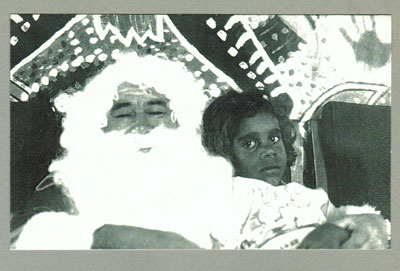
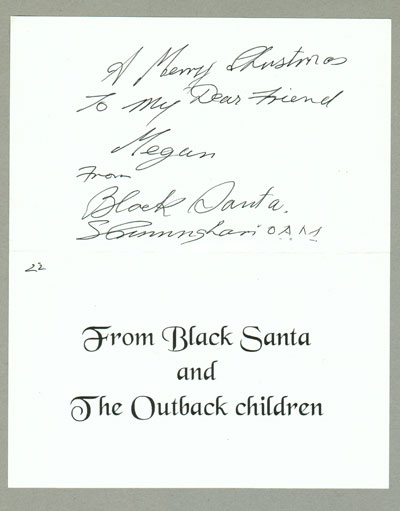
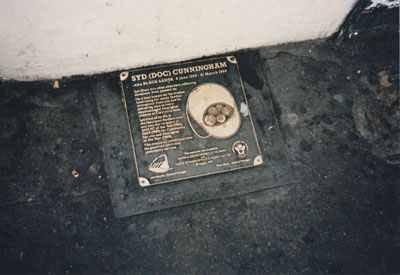
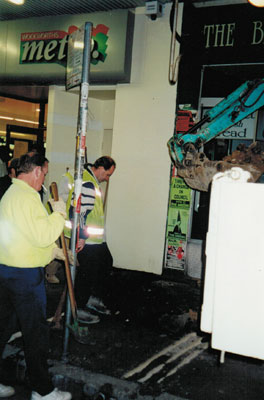
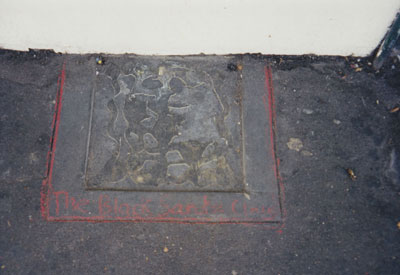
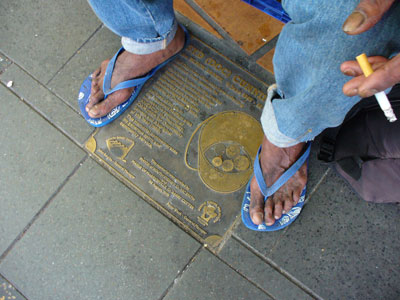

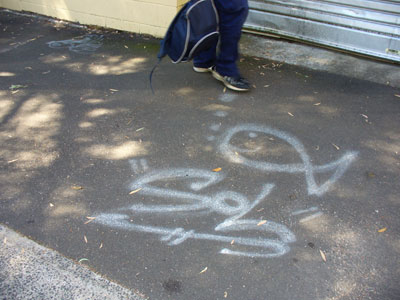
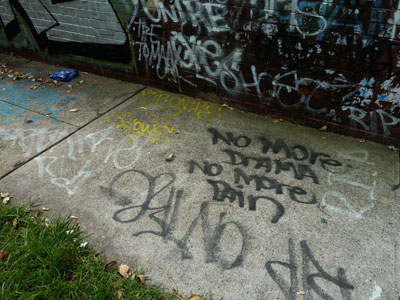
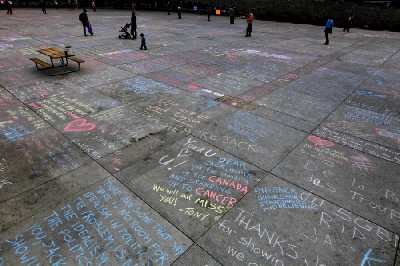


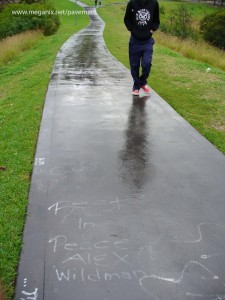
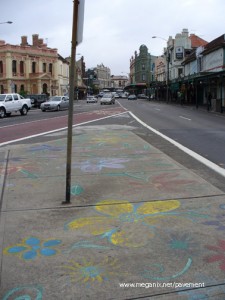 I wonder how many people know the story behind the coloured flowers on the traffic island at Newtown Bridge? They were originally painted during a day-long Reclaim the Streets party in November 1999, but if that were the whole story they would have worn off long ago. In fact, these flowers were deliberately preserved by friends of Kathy Jones.
I wonder how many people know the story behind the coloured flowers on the traffic island at Newtown Bridge? They were originally painted during a day-long Reclaim the Streets party in November 1999, but if that were the whole story they would have worn off long ago. In fact, these flowers were deliberately preserved by friends of Kathy Jones.